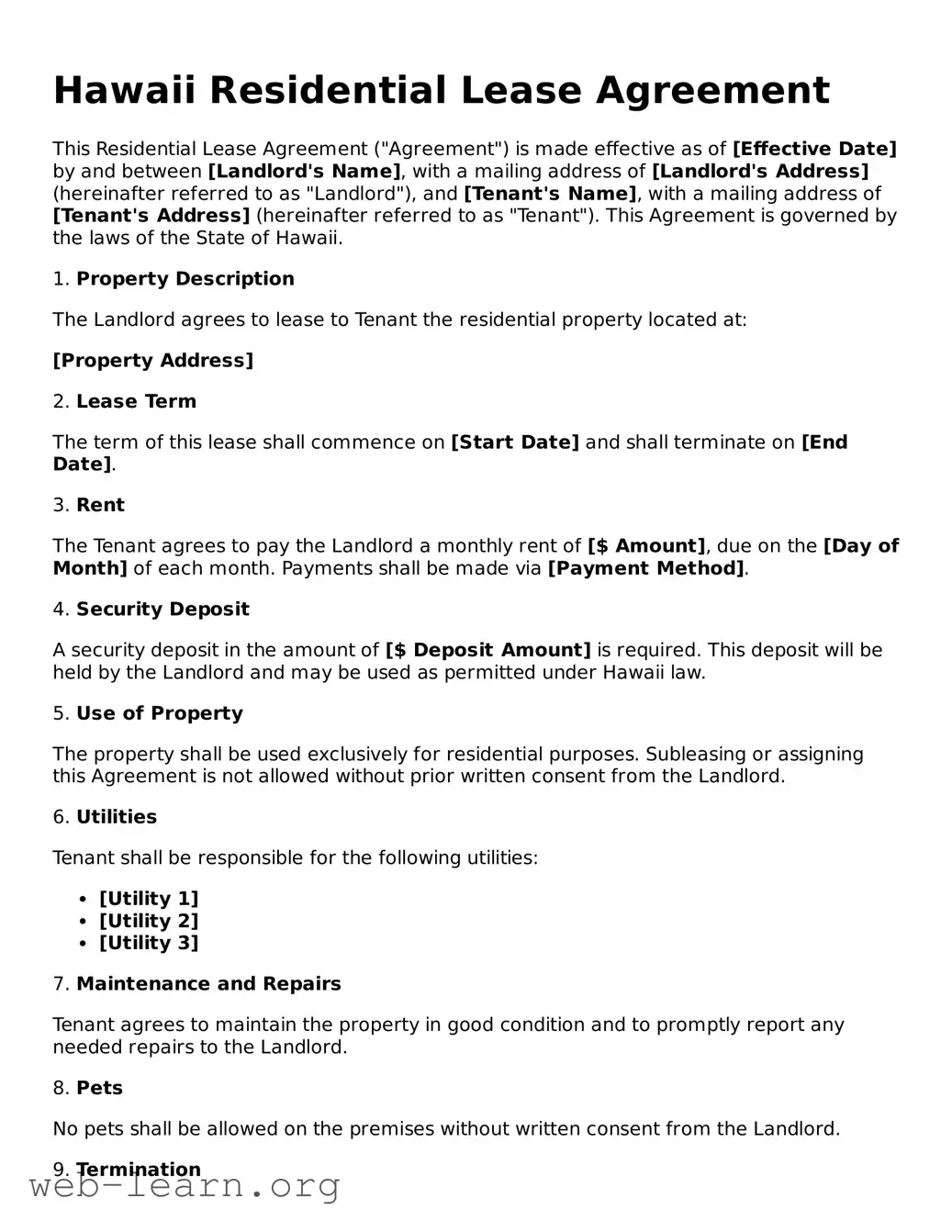Hawaii Residential Lease Agreement
This Residential Lease Agreement ("Agreement") is made effective as of [Effective Date] by and between [Landlord's Name], with a mailing address of [Landlord's Address] (hereinafter referred to as "Landlord"), and [Tenant's Name], with a mailing address of [Tenant's Address] (hereinafter referred to as "Tenant"). This Agreement is governed by the laws of the State of Hawaii.
1. Property Description
The Landlord agrees to lease to Tenant the residential property located at:
[Property Address]
2. Lease Term
The term of this lease shall commence on [Start Date] and shall terminate on [End Date].
3. Rent
The Tenant agrees to pay the Landlord a monthly rent of [$ Amount], due on the [Day of Month] of each month. Payments shall be made via [Payment Method].
4. Security Deposit
A security deposit in the amount of [$ Deposit Amount] is required. This deposit will be held by the Landlord and may be used as permitted under Hawaii law.
5. Use of Property
The property shall be used exclusively for residential purposes. Subleasing or assigning this Agreement is not allowed without prior written consent from the Landlord.
6. Utilities
Tenant shall be responsible for the following utilities:
- [Utility 1]
- [Utility 2]
- [Utility 3]
7. Maintenance and Repairs
Tenant agrees to maintain the property in good condition and to promptly report any needed repairs to the Landlord.
8. Pets
No pets shall be allowed on the premises without written consent from the Landlord.
9. Termination
This Agreement may be terminated early by either party upon providing [Notice Period] written notice to the other party.
10. Governing Law
This Agreement shall be governed by and construed in accordance with the laws of the State of Hawaii.
IN WITNESS WHEREOF, the parties have executed this Residential Lease Agreement as of the date first above written.
___________________________
Landlord's Signature
[Landlord's Printed Name]
Date: [Date]
___________________________
Tenant's Signature
[Tenant's Printed Name]
Date: [Date]
